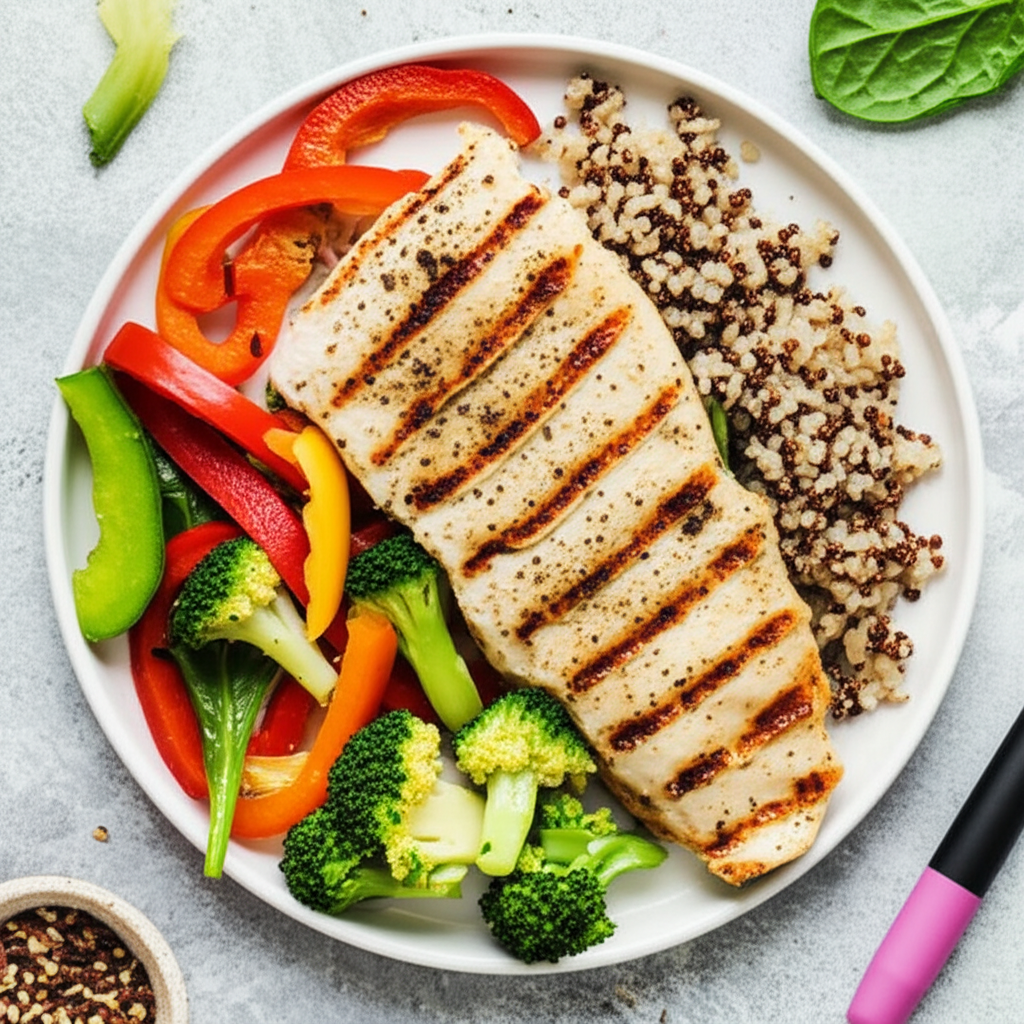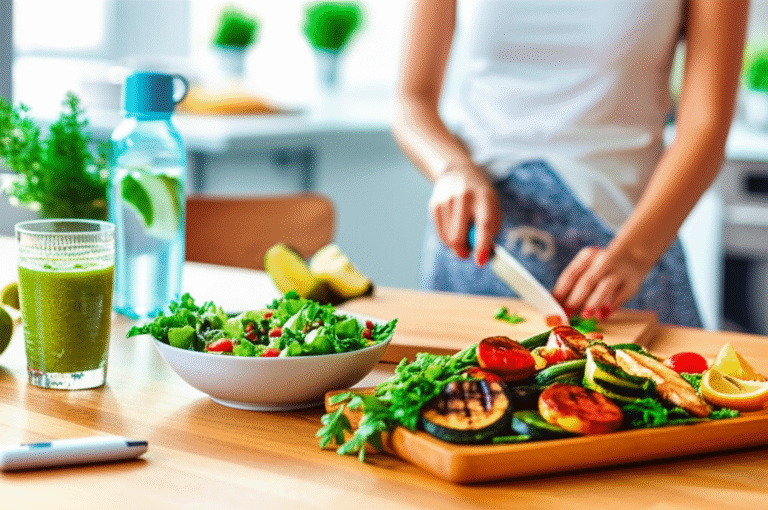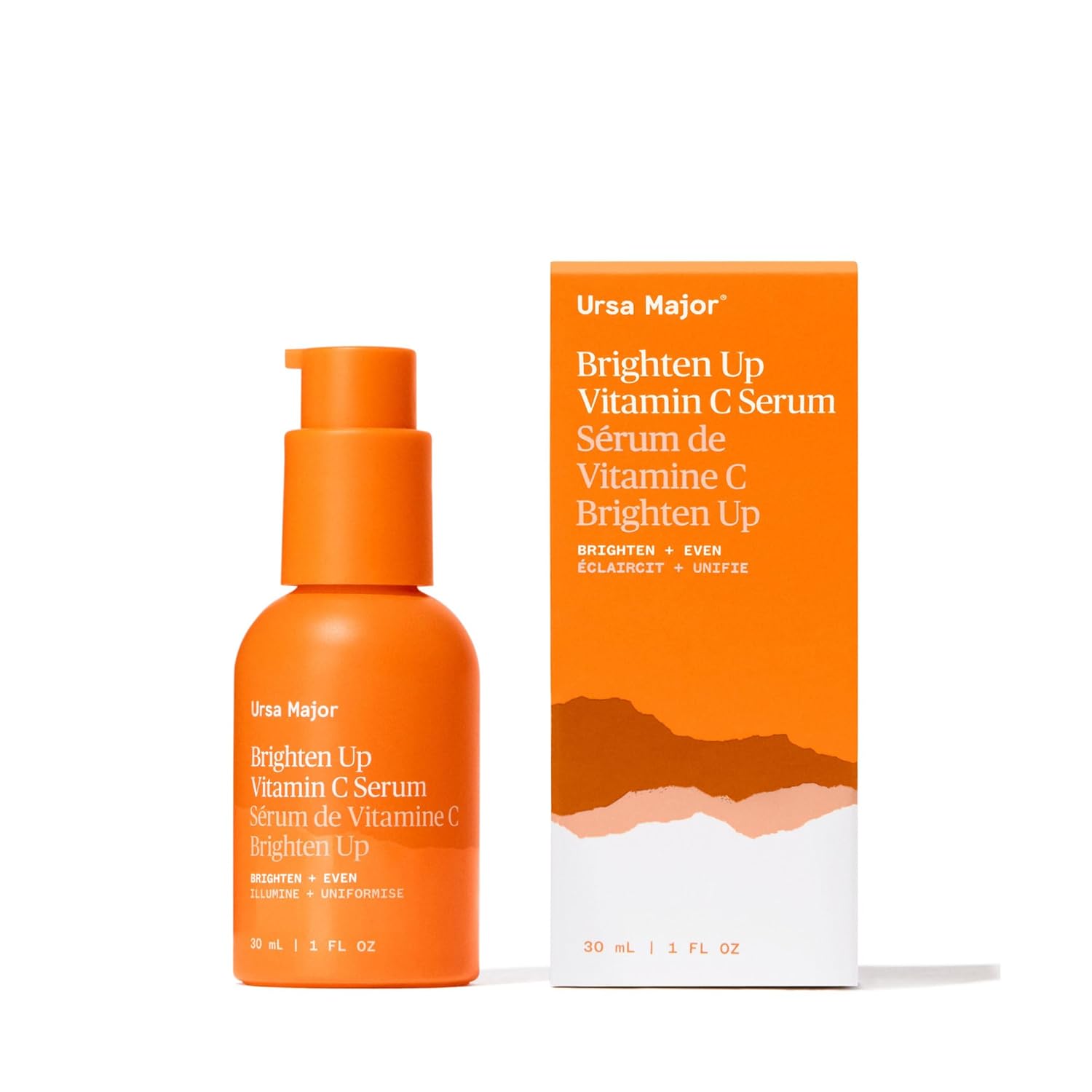On Ozempic, focus on lean proteins, non-starchy vegetables, and whole grains for effective weight loss. This essential meal plan prioritizes nutrient-dense, satisfying foods to manage hunger and support your journey.
Do you ever look at the food you eat and wonder if it’s really helping you reach your health goals? You’ve started Ozempic, a powerful tool for managing your health, but now face a new question: “What exactly should I be eating?” It’s easy to feel overwhelmed, like you’re navigating a minefield of dietary confusion. You’ve made the commitment to a healthier you, and the next step is understanding how your plate can work in harmony with your medication.
If you’re searching for a clear, simple guide to help you make the most of your Ozempic journey, you’ve come to the right place. We’re going to break down exactly what foods will support your weight loss and overall well-being, making this process feel less daunting and more achievable.
What to Eat on Ozempic for Weight Loss: The Foundation

Ozempic (semaglutide) works by slowing down digestion and signaling to your brain that you’re full. This means that what you eat becomes even more crucial. The goal isn’t just to eat less, but to eat smarter. We want to choose foods that keep you feeling satisfied, provide essential nutrients, and help manage any potential side effects like nausea.
Think of your Ozempic journey as a partnership. The medication provides a helping hand, and the right foods are your active support team. By focusing on nutrient-dense options, you’ll feel fuller for longer, reduce cravings, and give your body the fuel it needs to thrive.
The Power Trio: Protein, Fiber, and Healthy Fats
These three components are your best friends when you’re on Ozempic. They work together to keep your blood sugar stable, promote satiety, and prevent overeating.
1. Lean Protein: Your Satiety Superstars
Protein is essential for building and repairing tissues, but it’s also a powerhouse for keeping you feeling full. When you eat protein, it takes longer to digest, which helps combat hunger pangs that can derail your progress.
- Chicken and Turkey Breast: Versatile and low in fat, these are excellent choices for almost any meal.
- Fish: Especially fatty fish like salmon, mackerel, and sardines, which are rich in omega-3 fatty acids.
- Eggs: A complete protein source, perfect for breakfast or a quick snack.
- Lean Beef and Pork: Opt for cuts like sirloin or tenderloin.
- Tofu and Tempeh: Great plant-based protein options.
- Legumes (Beans, Lentils, Chickpeas): These also provide fiber, another key player in satiety.
Real-life example: Maria, a retired teacher, found that starting her day with scrambled eggs instead of cereal made a significant difference. “I used to be hungry again by 10 AM,” she shared. “Now, with eggs, I can easily last until lunch without snacking.” This simple swap, focusing on protein, kept her satisfied and reduced her overall calorie intake effortlessly.
2. Non-Starchy Vegetables: Fiber-Rich and Filling
These vegetables are low in calories and carbohydrates but packed with vitamins, minerals, and fiber. Fiber is crucial because it adds bulk to your meals, slows digestion, and further enhances feelings of fullness.
- Leafy Greens: Spinach, kale, romaine lettuce, arugula.
- Cruciferous Vegetables: Broccoli, cauliflower, Brussels sprouts, cabbage.
- Bell Peppers: All colors offer different nutrients.
- Cucumbers: Hydrating and low in calories.
- Tomatoes, Onions, Garlic: Flavor bases for many dishes.
- Asparagus, Green Beans, Zucchini: Great steamed or roasted.
Aim to fill at least half your plate with these vibrant veggies at lunch and dinner. They add volume and nutrients without significantly increasing your calorie count.
3. Healthy Fats: Essential for Hormones and Fullness
Fats are often misunderstood, but healthy fats are vital for hormone production, nutrient absorption, and can also contribute to feeling satisfied after a meal. The key is to choose unsaturated fats.
- Avocado: Creamy and packed with monounsaturated fats and fiber.
- Nuts and Seeds: Almonds, walnuts, chia seeds, flaxseeds (in moderation, as they are calorie-dense).
- Olive Oil: For cooking and salad dressings.
- Fatty Fish: As mentioned under protein, these provide omega-3s.
A small amount of healthy fat can make a meal more satisfying. For instance, adding a few slices of avocado to your salad or a sprinkle of seeds on your yogurt can make a big difference in how long you feel full.
What About Carbohydrates? Choose Wisely!
Ozempic affects how your body processes carbohydrates and sugars. While you don’t need to eliminate carbs entirely, choosing the right kinds is paramount. Focus on complex carbohydrates that are high in fiber. These are digested slowly, preventing sharp spikes and crashes in blood sugar, which can lead to intense cravings.
- Whole Grains: Oats, quinoa, brown rice, whole wheat bread/pasta.
- Starchy Vegetables (in moderation): Sweet potatoes, corn, peas.
- Fruits: Berries, apples, pears (which also have fiber!).
Limit or avoid: Refined carbohydrates like white bread, white rice, sugary cereals, pastries, and processed snacks. These offer little nutritional value and can lead to energy dips and increased hunger.
Hydration is Key
Drinking enough water is crucial for overall health and can significantly impact your weight loss efforts, especially on Ozempic. Water helps with digestion, can make you feel fuller, and is essential for your body to function optimally. Sometimes, feelings of hunger can actually be thirst.
- Aim for at least 8 glasses (64 ounces) of water per day.
- Sip water throughout the day, rather than chugging large amounts at once.
- Carry a reusable water bottle with you as a constant reminder.
Tip: If plain water feels boring, try infusing it with fruits like lemon, cucumber, or berries, or opt for herbal teas. Avoid sugary drinks like soda, sweetened juices, and energy drinks, as they can interfere with your Ozempic goals.
A Sample “What to Eat on Ozempic” Meal Plan
This is a sample plan to give you a clear picture of what balanced, satisfying meals might look like. Remember to adjust portion sizes based on your individual needs and hunger cues. Always consult with your doctor or a registered dietitian for personalized advice.
Day 1
| Meal | Focus | Example |
|---|---|---|
| Breakfast | Protein & Fiber | 2 scrambled eggs with spinach and a small slice of whole-wheat toast. |
| Lunch | Lean Protein & Veggies | Grilled chicken salad with mixed greens, cucumber, tomatoes, bell peppers, and a light vinaigrette. |
| Dinner | Lean Protein, Veggies & Complex Carb | Baked salmon with roasted broccoli and a small serving of quinoa. |
| Snack (Optional) | Healthy Fat & Protein | A small handful of almonds or an apple with a tablespoon of almond butter. |
Day 2
| Meal | Focus | Example |
|---|---|---|
| Breakfast | Fiber & Protein | Oatmeal (made with water or unsweetened almond milk) topped with berries and a sprinkle of chia seeds. |
| Lunch | Legumes & Veggies | Lentil soup with a side salad. |
| Dinner | Lean Protein & Veggies | Turkey meatballs (made with lean ground turkey) with zucchini noodles and a marinara sauce. |
| Snack (Optional) | Protein | Greek yogurt (plain, unsweetened) with a few berries. |
Day 3
| Meal | Focus | Example |
|---|---|---|
| Breakfast | Protein & Healthy Fat | Greek yogurt with a small portion of mixed berries and a sprinkle of walnuts. |
| Lunch | Lean Protein & Veggies | Tuna salad (made with Greek yogurt instead of mayonnaise) on whole-wheat crackers with celery sticks. |
| Dinner | Lean Protein, Veggies & Complex Carb | Stir-fried tofu with mixed vegetables (broccoli, bell peppers, snow peas) and a small portion of brown rice. |
| Snack (Optional) | Fiber & Healthy Fat | A hard-boiled egg or carrot sticks with hummus. |
Visual Suggestion: An infographic showing the “plate method” – half non-starchy vegetables, a quarter lean protein, and a quarter complex carbohydrates – would be highly beneficial here.
Managing Potential Side Effects with Food
One of the most common side effects of Ozempic, especially when starting, is nausea. Fortunately, your food choices can significantly help manage this.
- Eat smaller, more frequent meals: Instead of three large meals, try five or six smaller ones. This prevents your stomach from becoming too full.
- Avoid greasy, fried, or very heavy foods: These are harder to digest and can worsen nausea.
- Choose bland, easy-to-digest foods: Think plain crackers, toast, rice, applesauce, or bananas.
- Avoid strong smells: Some people find that certain cooking smells trigger nausea.
- Don’t lie down immediately after eating: Stay upright for at least 30 minutes.
- Hydrate slowly: Sip water or clear broths throughout the day.
Real-life example: David explained how he learned to manage his nausea. “At first, I felt sick every evening. My doctor suggested I stop eating a couple of hours before bed and stick to lighter dinners like chicken breast and steamed veggies. It made a world of difference.” This proactive approach to food selection helped him stay on track with his Ozempic treatment.
Portion Control and Mindful Eating
Ozempic naturally helps reduce appetite, but it’s still important to be mindful of how much you’re eating. Slowing down and paying attention to your body’s hunger and fullness cues is crucial.
Tips for Mindful Eating:
- Savor each bite: Really taste your food.
- Put your fork down between bites: This slows down your eating pace.
- Eliminate distractions: Turn off the TV, put away your phone, and focus on your meal.
- Listen to your body: Stop eating when you start to feel comfortably full, not stuffed.
- Plan your meals: Having a plan reduces impulsive food choices.
This mindful approach, combined with the appetite-reducing effects of Ozempic, creates a powerful synergy for weight loss. You’ll start to recognize your body’s signals more clearly, leading to more sustainable eating habits.
What to Avoid When on Ozempic
While focusing on what you should eat is key, it’s equally important to know what to limit or avoid to maximize your success and minimize potential side effects.
High-Sugar Foods and Drinks:
- Sodas, sweetened juices, energy drinks
- Candy, desserts, pastries
- Sugary cereals and sweetened yogurts
These can cause blood sugar spikes and crashes, leading to increased hunger and cravings, defeating some of Ozempic’s benefits.
Highly Processed Foods:
- Fast food, chips, cookies
- Processed meats (hot dogs, deli meats)
- Pre-packaged meals high in sodium and unhealthy fats
These are often low in nutrients and fiber and can contribute to overeating.
Excessive Saturated and Trans Fats:
- Fried foods
- Fatty cuts of meat
- Butter and cream in large quantities
- Certain baked goods and margarines
While healthy fats are good, these less healthy fats can impede weight loss and overall health.
Alcohol:
Alcohol can impact blood sugar levels and empty calories. It’s best to consume in moderation, if at all, and always with food. Discuss your alcohol consumption with your doctor.
For more information on medication and lifestyle, the Centers for Disease Control and Prevention (CDC) offers excellent resources on healthy eating for weight management: [CDC Healthy Weight Nutrition].
Incorporating Exercise
While this article focuses on “what to eat on Ozempic,” it’s crucial to mention that combining diet with regular physical activity yields the best results for weight loss and overall health. Exercise helps burn calories, build muscle mass (which boosts metabolism), and improves cardiovascular health.
Start gradually. Even a 30-minute brisk walk most days of the week can make a significant difference. As you get more comfortable, you can incorporate other activities like swimming, cycling, or strength training.
Visual Suggestion: A simple weekly exercise planner table could be useful for readers.
Frequently Asked Questions (FAQs)
Can I eat out at restaurants on Ozempic?
Yes, but be mindful of your choices. Opt for grilled, baked, or steamed dishes over fried. Load up on vegetable sides, and be aware of portion sizes. Many restaurants offer lighter options or can prepare dishes with less oil or sauce.
Will I experience hunger when taking Ozempic?
Ozempic generally reduces appetite and can lead to feeling fuller faster and for longer. However, you’ll still experience some hunger cues, which is normal. The key is to make those hunger moments count with nutrient-dense choices.
Should I count calories strictly while on Ozempic?
While Ozempic helps manage intake, being aware of your calorie consumption is still beneficial. Focus on food quality and portion control rather than strict calorie counting, which can be overwhelming for beginners and may not be necessary with the medication’s appetite-suppressing effects.
What are the best snacks to have on Ozempic?
Choose snacks that combine protein and/or fiber. Examples include a small handful of nuts, Greek yogurt, apple slices with almond butter, hard-boiled eggs, or vegetable sticks with hummus. These will keep you satisfied until your next meal.
Is it okay to drink coffee or tea on Ozempic?
Plain black coffee or unsweetened tea is generally fine. However, avoid adding large amounts of sugar, cream, or sugary syrups, as these add unnecessary calories and can affect your blood sugar. Be mindful of how caffeine affects you, especially if you’re sensitive.
What if I experience constipation on Ozempic?
Constipation can be a side effect. Ensure you’re drinking plenty of water and eating fiber-rich foods like vegetables, fruits, and whole grains. Gentle exercise can also help. If it persists, speak to your doctor about potential remedies.
Your Journey to a Healthier You Starts Today
Navigating “what to eat on Ozempic for weight loss” doesn’t have to be a culinary mystery. By focusing on lean proteins, plenty of non-starchy vegetables, healthy fats, and smart carbohydrate choices, you’re setting yourself up for success. Remember that Ozempic is a powerful tool, and when supported by nutrient-dense foods and mindful eating habits, it can be incredibly effective in helping you reach your health goals.
Start by making small, sustainable changes to your diet. Don’t aim for perfection; aim for progress. Celebrate every healthy meal and every step you take towards a more vibrant you. Your weight loss journey doesn’t have to be complicated. Start small, stay consistent, and remember—even the smallest steps lead to big results.



